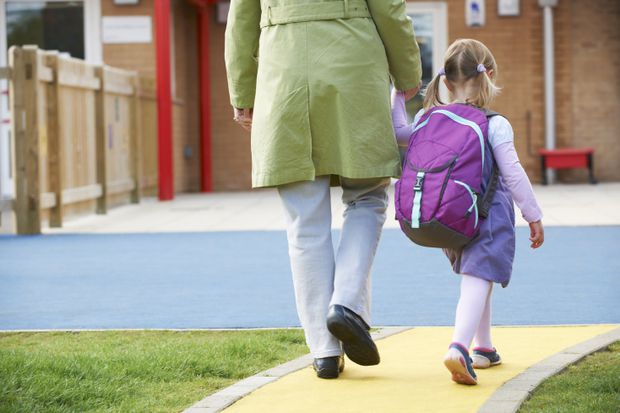
MACHINE HEADZ/ISTOCKPHOTO / GETTY IMAGES
In Ontario alone, some 20,000 children at 800 schools help students safely cross the road and board the school bus every day.
September is among the most dangerous months for pedestrians. Yes, kids can be careless and forget to look both ways, so itʼs up to us – as drivers – to watch out for their mistakes.
Last year, the British Columbia Automobile Association did a provincewide survey asking elementary school principals, teachers and parents in school drop-off zones what poor driving habits theyʼd witnessed.
At the top of the list was speeding, followed by not stopping at crosswalks and, yes, distracted driving.
Weʼre not just talking about cellphone use either. In a school zone, drivers have to contend with pandemonium as kids bolt for the bus, run through crosswalks and make a dash for their own mom-driven limos. Drivers vying for the prized curbside pickup spot can also be distracted when their kids pile into the back seat demanding a pit-stop at McDonaldʼs.
So, let’s go over the rules to make sure everyone gets to school and back safely.
SCHOOL ZONES
It used to be easy to spot school zones where motorists are required to reduce their speed during the school year by the classic five-sided yellow sign featuring silhouettes of two school children walking with books in hand.
Over the past few years, however, some jurisdictions across the country have decided to replace school zones with playground zones. Take Edmonton and Calgary, for instance. Motorists are expected to reduce their speed to 30 kilometres an hour from 7:30 a.m. to 9 p.m. every day of the year.
Most communities in Canada expect drivers to reduce their speed in a school zone to a maximum of 30 km/h with most rural roads setting the speed limit from 30 km/h to 60 km/h. In Ontario, school-zone speeds are typically 40 km/h. According to the World Health Organization, a pedestrian has a 90-per-cent chance of surviving being hit by a car at a speed of 30 km/h, but only a 50-per-cent chance of surviving an impact at speeds greater than 45 km/h.
It’s up to the community to decide when the speed zones take place and that varies across the country. Thankfully, in most areas, the signs post the times the rules are in effect. In places such as Brampton, Ont., big amber lights flash during the designated speed reduction times. In Nova Scotia, you’re expected to reduce your speed to 30 km/h when you see children present any time of the day, and any day of the year.
And, in British Columbia, don’t expect a sign to tell you when the zone terminates. It’s up to you to notice the back of the five-sided sign used for the opposite direction of travel to know the zone has ended.
Don’t forget that passing another vehicle travelling in the same direction while in a school or playground zone is illegal.
SCHOOL-BUS SAFETY
School-bus safety rules vary by province. Drivers travelling in either direction in British Columbia, Manitoba, New Brunswick, Newfoundland and Labrador, Northwest Territories, Nunavut, Ontario, Quebec, Saskatchewan and Yukon have to stop when the red lights on a school bus are flashing. But the rule is relaxed in some provinces when it’s a divided highway.
School buses in Alberta, Nova Scotia and Prince Edward Island use flashing red lights to signal oncoming traffic to stop, but they can also use an amber flashing light to notify drivers itʼs okay to pass the bus cautiously in either direction.
CROSSWALK SAFETY
It was 1929 when the Canadian Automobile Association started the CAA Student Safety Patrol Program, in which students in Grades 5 and Grade 6 jumped at the chance to be a patroller. In Ontario alone, some 20,000 children at 800 schools help students safely cross the road and board the school bus every day.
As a driver in a school zone, watch for those students wearing neon-green safety vests and show them the respect they deserve.
TOP TIPS TO ENSURE STUDENT SAFETY
- Know the speed-zone requirements for your community or province.
- Watch for school safety patrollers at crosswalks and obey their signals.
- Do not resume driving through the crosswalk until all pedestrians have reached the sidewalk.
- Drop off your kids outside the congestion zone on the same side of the street as the school.
- Pick up your kids at the same uncongested area.
- Watch for distracted children darting out from between cars.
- Stop in both directions when the red lights on a school bus are flashing.
- In unpatrolled crosswalks, tell your kids to make sure all drivers have stopped before crossing the road.
- Suggest your children walk in groups – especially when crossing a street.
- Suggest your children put away their phones and remove their earphones while crossing the road.
Source: The Globe and Mail
